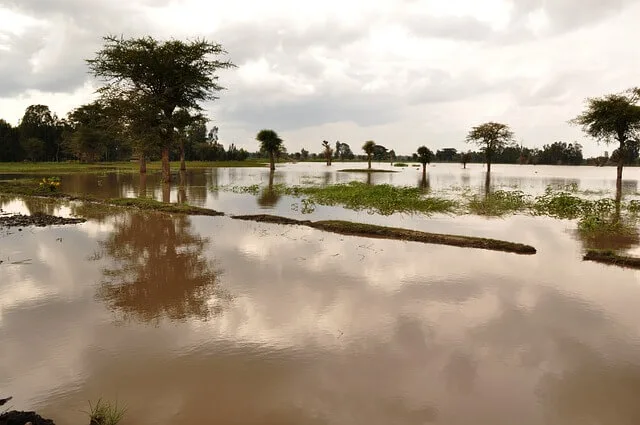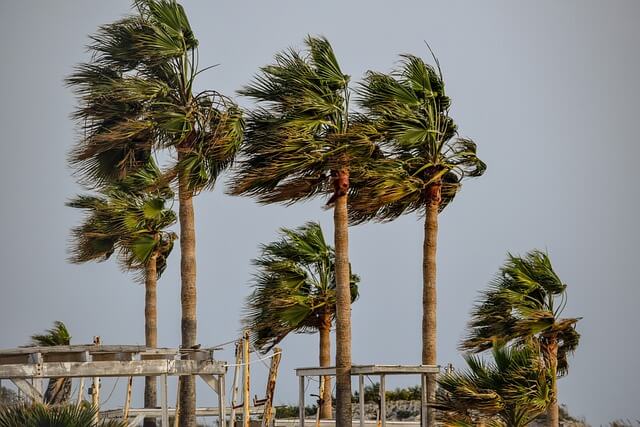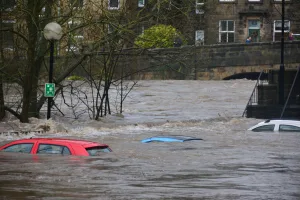How to Create a Comprehensive Hurricane Recovery Plan
Hurricanes, with their destructive force, can leave behind a trail of devastation. If you’ve ever experienced the aftermath of a hurricane, you know just how overwhelming it can be.
This is where a Hurricane Disaster Recovery Plan comes into play.
Although a hurricane recovery plan can’t take away all of the damages caused by the storm, it can help you restore your life to a sense of normalcy as quickly and efficiently as possible.
Whether you have recently been hit by a hurricane or are looking to prepare for future events, this guide is tailored to help you regain control, rebuild, and restore your life.
1. Assess the Damage
The first step in any recovery plan is to assess the extent of the damage. This is crucial to help you understand the scope of work needed to rebuild your life. From structural damage to personal property losses, it’s essential to leave no stone unturned.
Conducting a Thorough Assessment
To assess damage effectively, start by checking your home for structural integrity. It’s crucial to determine if it’s safe to stay in your current location.
Begin with a visual inspection of the exterior of your property. Look for visible signs of damage such as fallen trees, downed power lines, or structural damage to your home. Remember, if you notice downed power lines, do not approach them and contact your local utility company immediately.
Safety should always be your top priority during the recovery process. Hurricane aftermaths can be riddled with hazards, both seen and unseen. Taking precautions is key to avoiding accidents and serious injuries.
Document Damages
If it’s safe to do so, make sure to document the damages. Create a checklist to ensure you document everything thoroughly. Take pictures from multiple angles, and don’t forget to document serial numbers and purchase receipts for expensive items.
Following a hurricane, it is crucial to thoroughly document all items that have been damaged. This includes not only walls, flooring, ceilings, and utilities, but also standing water and every individual item that has been affected. Taking photos and videos will aid in accurately assessing and addressing the damage.
2. Contacting Emergency Services
Knowing when to call for professional help is crucial. If you suspect gas leaks, electrical issues, or someone is injured, call emergency services immediately. Timely action can prevent further disasters.
Make sure you have the contact information for local emergency services readily available. In the chaos of recovery, quick access to these numbers can make a significant difference.
3. Securing Shelter
If your home is uninhabitable, you’ll need temporary shelter. Look into local shelters, hotels, or temporary housing options. Make arrangements for you and your family to stay safe and comfortable.
Preparing an Emergency Shelter Kit
As you transition to temporary shelter, prepare an emergency shelter kit with essential items like clothing, personal documents, medications, and emergency supplies. Having this kit on hand ensures you’re ready if a hurricane causes relocation.
4. Check for Clean Food and Water
The availability of clean food and water is essential to your safety. After a hurricane, drinking contaminated water can result in serious illness or even death. If you aren’t sure if your water is clean, lean on bottles of water and other methods of purified water like a Brita.
The same goes for food. After a hurricane, you might find your access to fresh food limited. It is highly recommended to stock up on non-perishable items before a hurricane hits.
Canned goods with pop-tops are a great option since they don’t require a can opener. High-protein, non-perishable foods like canned tuna, canned chicken, or peanut butter can provide you with necessary nutrients. Be sure to have a manual can opener in case your cans don’t have pop-tops.
Additionally, ready-to-eat meals and protein bars can be life-saving. Remember, it’s critical to ensure your food hasn’t come into contact if you’re in a flooded home – if in doubt, discard it. Safety should always come first when deciding what to eat after a hurricane.
5. Cleaning and Salvaging Items
During cleanup, you may be able to salvage some of your possessions. For those possessions that are damaged, you can get a contents cleaning and restoration team to repair them.
Contents restoration can be applied to a wide variety of different items that may get damaged after a disaster such as a hurricane. During the rebuilding stage, contents restoration services are just as critical as reconstruction, because they include everything inside the walls of a building.
The goal of contents restoration is to restore your damage possessions to pre-loss condition. Time is critical, so getting the items over to the professionals quickly is important.
What Should you do After a Hurricane?

After a hurricane, follow these 10 important steps to ensure your safety and begin the process of recovery:
Ensure Safety: First and foremost, check for injuries among yourself, your family, and anyone around you. Administer first aid as needed and seek medical help for severe injuries.
Stay Informed: Keep listening to weather updates and official announcements. Post-hurricane hazards like flooding, landslides, or tornadoes can still pose risks.
Contact Loved Ones: Let friends and family know you’re safe and your whereabouts. Use text messages or social media if phone lines are congested.
Assess Your Home: Carefully inspect your property for damage. Look for structural damage, gas leaks, or electrical hazards. If you suspect gas leaks, leave the area immediately and report it to authorities.
Stay Put If Evacuated: If you evacuated, wait for authorities to declare it safe to return home. Returning prematurely can be dangerous and hamper emergency response efforts.
Use Generators Safely: If using a generator, place it outdoors in a well-ventilated area to prevent carbon monoxide poisoning. Never operate it inside your home or garage.
Avoid Flooded Areas: Stay away from flood zones including flooded streets and do not drive through floodwaters, as they may be deeper and more dangerous than they appear. Follow road closures.
Food and Water Safety: Discard perishable food that may have spoiled due to power outages. Boil water or use bottled water if there’s a risk of contaminated water supply.
Contact Insurance: Notify your insurance company of any damage to your property and begin the claims process as soon as possible. Document the damage with photos or videos for insurance purposes.
Grab your Hurricane Recovery Plan: Find your hurricane recovery plan and follow the steps. Assess the damage to your home or business, call emergency services if needed, find shelter, check for clean food and water, and finally clean and salvage your items.
These steps will help you navigate the immediate aftermath of a hurricane, prioritize safety, and initiate the recovery process effectively.
How long does it take to recover from a hurricane?
Recovering from a hurricane is a process that varies in duration, largely depending on the extent of the damage caused and the resources available for recovery. In minor cases, recovery may take a few weeks to a couple of months, allowing time for cleaning, minor repairs, and restoration of normal daily activities.
However, in instances where severe damage has occurred, such as major structural damage to houses or infrastructure, the recovery process can extend to many months or even years.
Need Help with Recovery after a Hurricane?
Creating a hurricane recovery plan is a step-by-step process that begins with damage assessment and prioritizing safety. Although following these steps and staying prepared for future hurricanes, can help you rebuild and restore your life after the storm with confidence and resilience, sometimes professional help is still needed. If you are in need of storm damage restoration after a hurricane, whether its from flood damage, wind damage, or are in need of contents restorations, Jenkins Restorations is here to help repair the damage and get your home back to normal.

